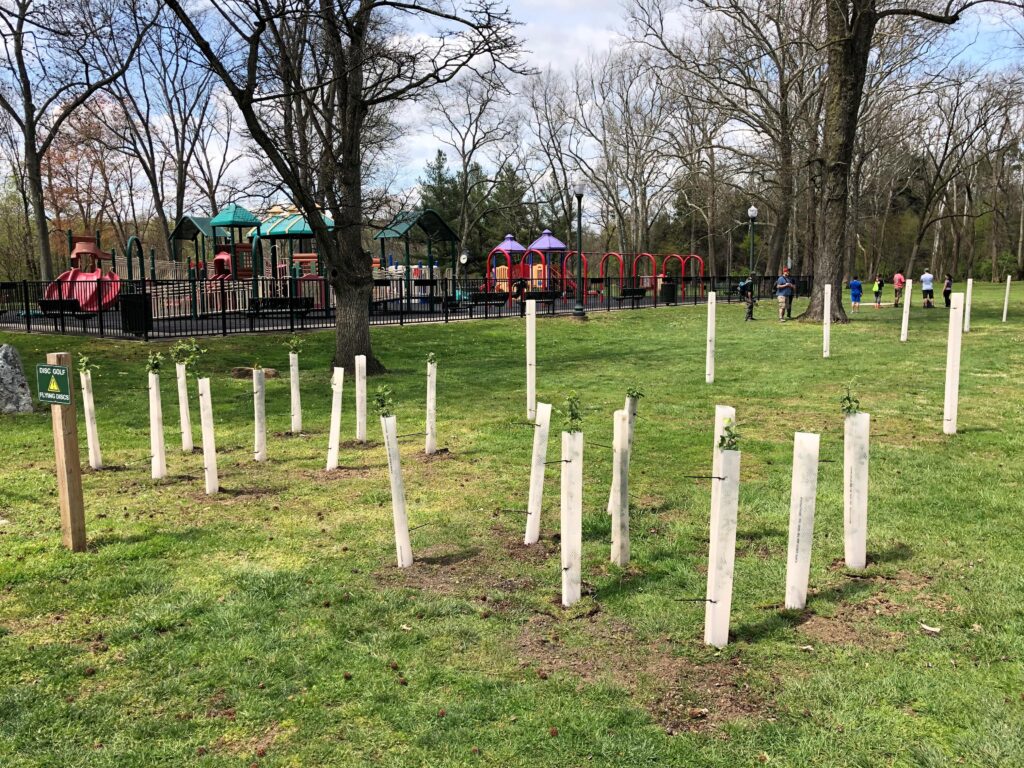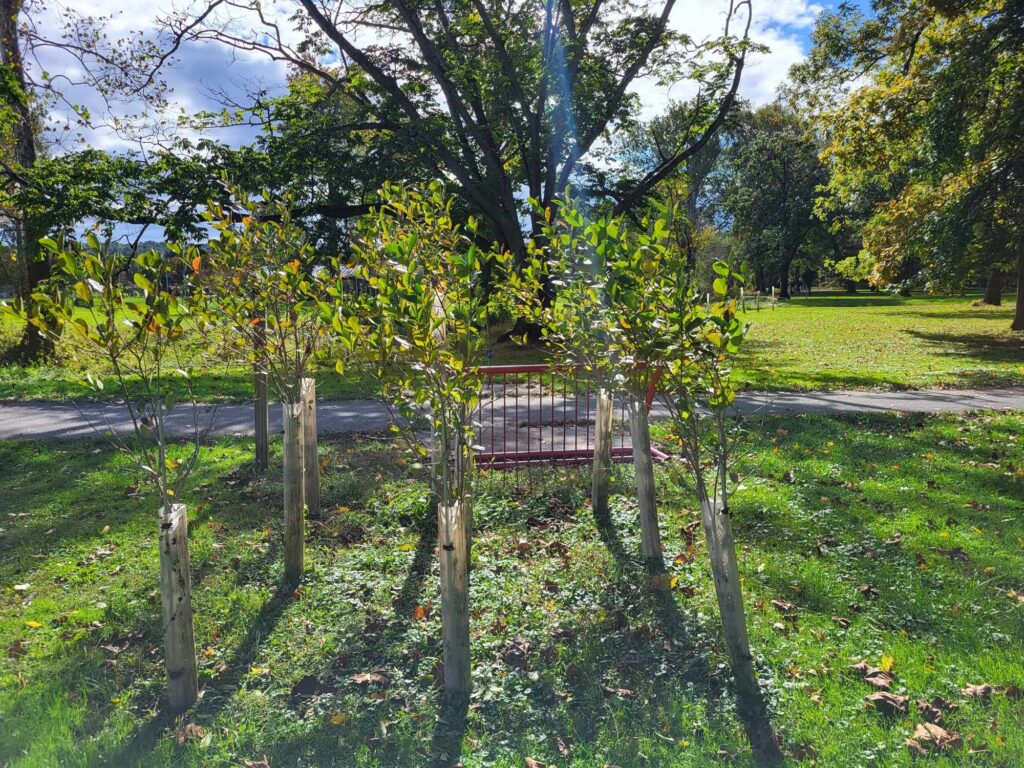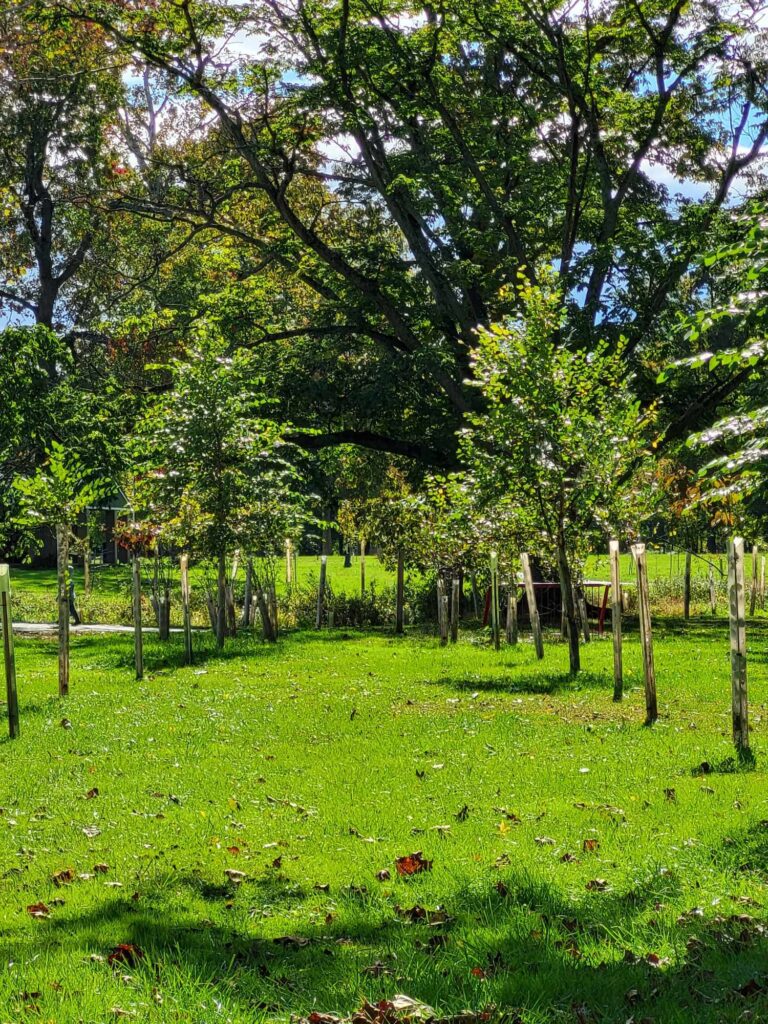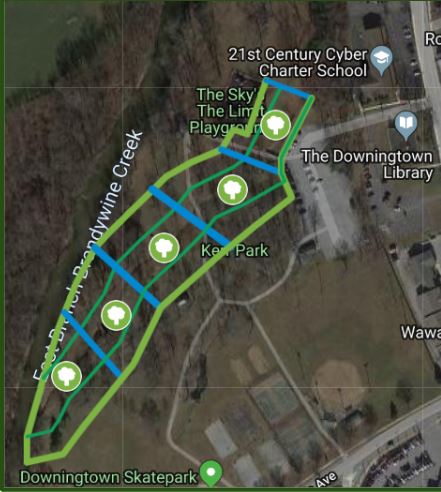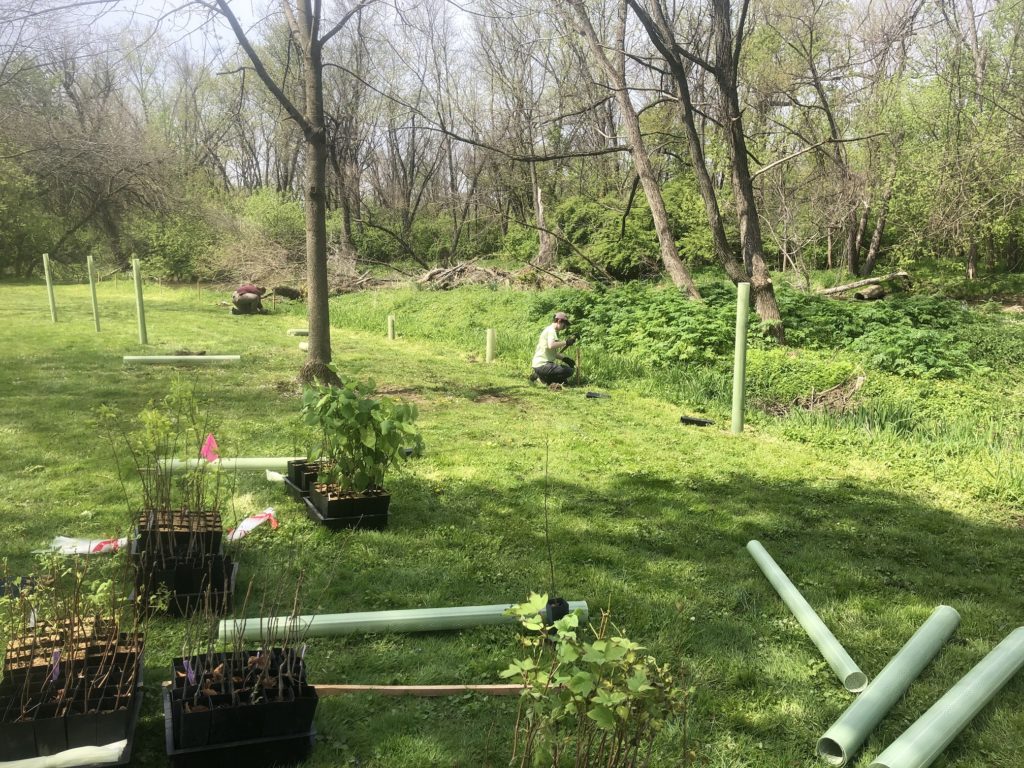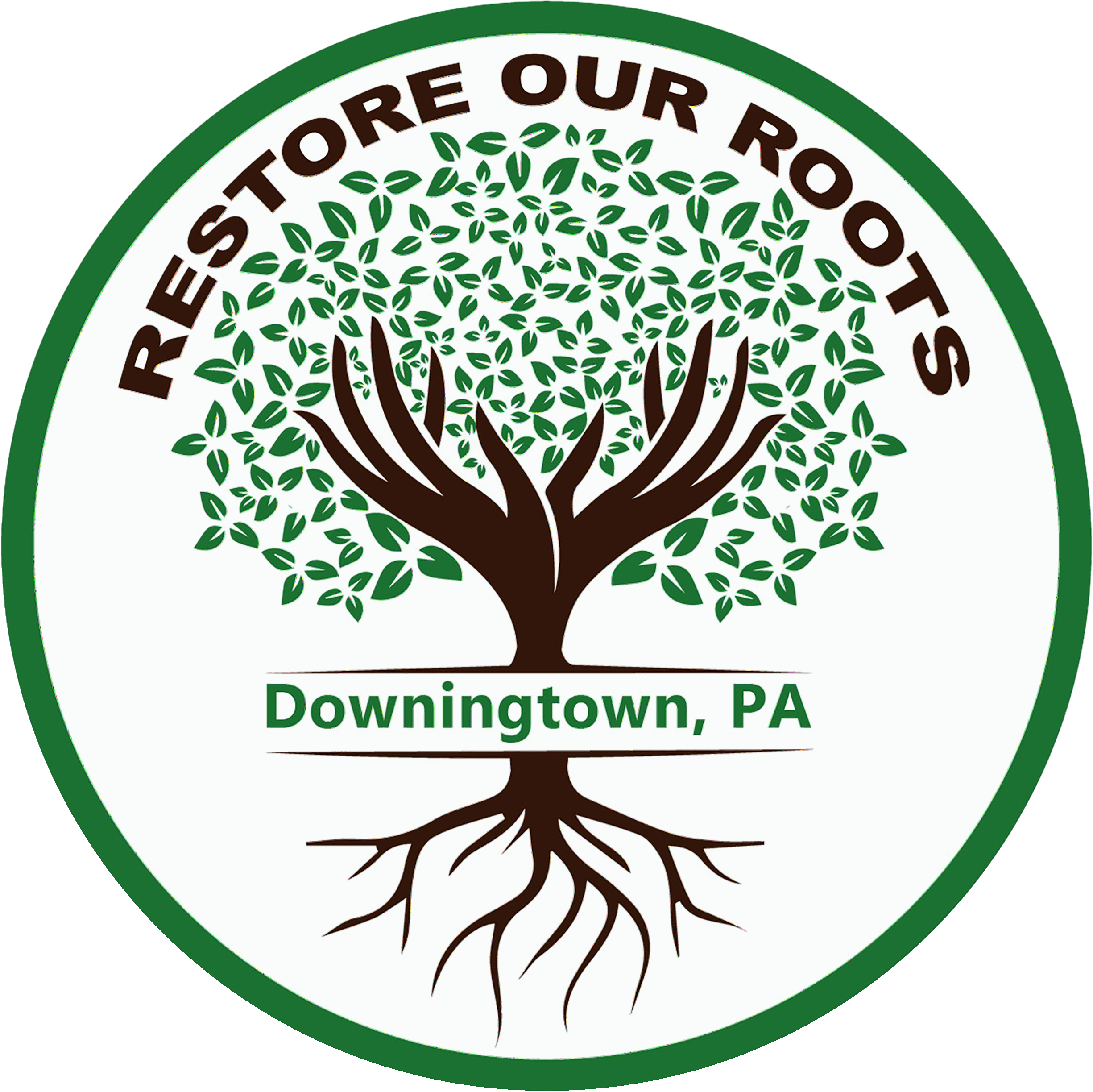Five phases in five years sounded like the perfect project goal when Restore Our Roots was founded in 2019. The total planting project took 2 years to complete with phase 5 completed at the end of April 2021. Even though planting the trees and shrubs went fairly quickly our work is far from over.
The final phase of our original Kerr Park Project was a success. Something many of us really love about phase 5 is the amount of edible plants in the area. This area consists of American Persimmon, Spicebush, Highbush Blueberry, and Cranberrybush Viburnum. Other trees in that area are Red Maple, Redbud, and more. On the bank where the stream meets the Brandywine River is a grove of Highbush Blueberries, with Spicebush continuing along the stream bank towards the stone bridge. You will notice the area directly next to the stone bridge downstream is clear, this was planned to give enough throwing room for people playing disc golf. The first few larger tree tubes you see are American Persimmons. In about seven years these trees will produce a bountiful amount of fruit for a sweet treat while visiting the park or perfect for creating an amazing thanksgiving dessert.
A reflection of the last two years: From the beginning ROR members continue to spend hundreds of hours visiting the park, planning where certain species would be beneficial, and observing how locals use different areas. Each area has different soil type, sunlight tolerance, elevation, and human interaction.
As you are walking down the stream you will notice smaller tubes in the row closest to the stream bank, and taller tubes further out. Doing it this way accommodates the zones of the riparian buffer. Zone one, along the stream bank, is ment for stabilization, as well as providing shade cover and organic matter to the stream. Zone two is usually managed forest. The plants in zone two help absorb excess nutrients such as nitrogen and phosphorus, the key ingredients for creating algae blooms, which can be toxic, from entering the stream. These plants will also slow the amount of runoff. Zone three in the riparian buffer is further away and is mostly grass and wildflower cover, great for our parks recreational area.

Let’s take a walk through the phases of the stream. At the northern part of the stream by the Sky’s the Limit Playground the soil is dark and nutrient rich. ROR created a plan to allow for the playground to be seen from the parking lot, by lining the plants up in rows and choosing species that will have narrower trunks. As we move downstream the bank gets lower, closer to the water’s edge with more muddy soil. This is great for River Birch and Buttonbush since they prefer more moisture and this is an area that floods more often. Planting water loving shade tolerant plants here will aid in pulling water into the ground, and filtering out pollutants. Towards the end of the stream the soil is sandier and looser, perfect for Highbush Blueberries and Spicebush.
Moving forward ROR members will continue with maintenance of the riparian buffer area. This includes trimming the grass around tree tubes, seasonal mowing of the stream banks, clearing invasive plants, watering, and replacing tree tubes and poles as needed. ROR also plans to implement other plantings in parks around Downingtown, invasive plant clearing events, and educational programs.
